I am new, not that good with functions, and I am trying to solve this question:
Suppose
A,B,Care arrays of integers of size[M],[N], and[M][N], respectively. The user will enter the values for the arrayAandB. Write a user defined function in C++ to calculate the third arrayCby adding the elements ofAandB. If the elements have the same index number, they will be multiplied.Cis calculated as the following: -Use
A,BandCas arguments in the function.
Below is my attempt at the problem.
#include<iostream>
using namespace std;
void Mix(int(&A)[], int(&B)[], int(&C)[][100], int N, int M);
//dont understand why you used Q
int main()
{
//variable declaration
int A[100], B[100], C[100][100], n, m, l = 0;
//input of size of elements for first ararys
cout << "Enter number of elements you want to insert in first array: ";
cin >> n;
cout << "-----------------" << endl;
cout << "-----------------" << endl;
cout << "Enter your elements in ascending order" << endl;
//input the elements of the array
for (int i = 0; i < n; i++)
{
cout << "Enter element " << i + 1 << ":";
cin >> A[i];
}
cout << endl << endl;
//input of size of elements for first ararys
cout << "Enter number of elements you want to insert in second array: ";
cin >> m;
cout << "-----------------" << endl;
cout << "-----------------" << endl;
cout << "Enter your elements in descending order" << endl;
//input the elements of the array
for (int i = 0; i < m; i++)
{
cout << "Enter element " << i + 1 << ":";
cin >> B[i];
}
Mix(A, B, C, n, m);
cout << "\nThe Merged Array in Ascending Order" << endl;
for (int i = 0; i < n; i++) {
for (int j = 0; j < m; j++)
{
cout << C[i][j] << " ";
}
cout << "\n"; //endline never use endl its 10 times slower
}
system("pause");
return 0;
}
void Mix(int(&A)[], int(&B)[], int(&C)[][100], int N, int M)
{
// rows is the index for the B array, cols is index for A array
int rows = 0;
int cols = 0;
while (rows < M) {
while (cols < N) {
if (rows == cols) { // remember ==
C[rows][cols] = B[rows] * A[cols];
}
else {
C[rows][cols] = B[rows] + A[cols];
}
cols++; // increment here
}
rows++; // increment here
}
return;
}
Here is an example of the output:
